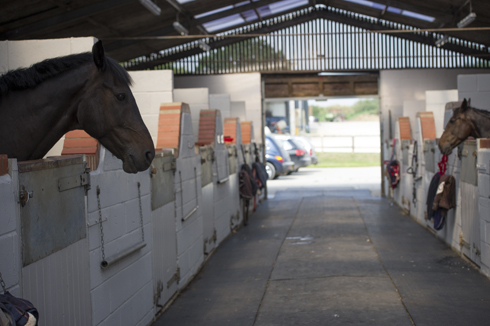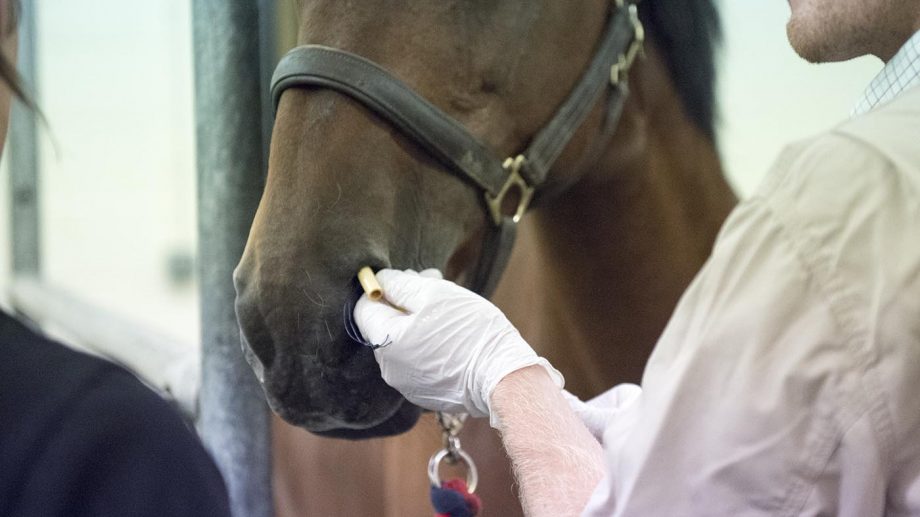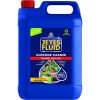What is strangles in horses?
Strangles in horses is one of the most common infectious equine diseases in the UK. It is a highly contagious infection of the upper respiratory tract caused by the bacteria Strep. equi (Streptococcus equi subspecies equi). Horses, ponies and donkeys of all types and ages can be affected, but young horses typically develop more severe signs.
While it is not typically life-threatening, strangles can spread quickly among horses on a yard or in locations where horses come together in large groups such as at shows, if appropriate levels of biosecurity are not in place. Stables, yards or show venues that have a positive case of strangles are encouraged to stop equine movement in and out of the location and to advise professionals such as vets, farriers, physios and external trainers prior to visiting. The economic impact of a strangles outbreak to an equine business can be significant.
Strangles in horses: Signs | Spread | Diagnosis | Treatment | Complications | During an outbreak | Aftercare | Prevention | New vaccine
Signs of strangles in horses
A horse with strangles will typically have a temperature (above 38.5°C), depression with a loss of appetite, and thick, yellow mucus draining from both nostrils. Hot, painful abscesses may develop on the sides of the head and throat, which may burst and discharge pus. The horse may experience difficulty eating or extending his head, due to the discomfort in its throat, hence the name strangles.
The signs of strangles vary from mild to severe and are not always typical. Strangles can produce only subtle signs in a healthy adult horse, who may display a slight short-term increase in temperature, a brief loss of appetite and a clear nasal discharge. When the disease is this mild, it may be missed.
If you suspect your horse may have strangles, it should be immediately isolated and veterinary advice sought.
How is strangles spread?
The bacteria are primarily transferred between horses by direct contact or shared environments such as water troughs, with discharge from any draining abscesses being highly infective. It can also be transferred via a third-party such as people’s hands or clothing, or tack and yard equipment. However, the strangles bacteria cannot be blown far in the wind unlike the equine flu virus, which is airborne over long distances.
Strangles can contaminate pastures and stables, but the bacteria survives best inside the horse. Outside of the horse strangles doesn’t survive well in hot, dry environments, usually lasting just a few days outdoors in summer but in wet, cool environments such as water buckets or troughs it may survive for more than a month.
The best way to reduce spread is to spot the signs early. It is important to isolate any horse suffering with the condition and undertake good hygiene and biosecurity precautions to avoid transferring the infection to others. It is good practice to isolate new equine arrivals to reduce the risk of bringing a fresh infection on to your stable yard — ask your vet for advice.
What is the timeline of strangles?
The incubation period is up to 14 days (usually 3-10 days), but abscesses can take up to a week to appear after that. The condition typically lasts for at least three weeks, if untreated, but can linger and may take a much longer to spread from horse to horse, so once a yard is infected, it can remain a problem for months.
Following recovery, around one in 10 of affected horses will become carriers, appearing outwardly healthy, while still carrying bacteria in one or both guttural pouches, which are cavities at the back of the horse’s throat. These ‘carriers’ can intermittently shed bacteria for months — or even years — afterwards, meaning they pose an on-going risk for potential infection to other horses.
How is strangles diagnosed?
A vet will make the initial diagnosis based on clinical signs. There are various lab tests available to confirm if a horse is suffering from the condition, where swabs or other samples can be collected to check for evidence of the bacteria. These are particular useful since some animals (usually up to 10%) will be carriers and not show any signs of illness. Once a horse has been identified as a carrier it can be treated to avoid risk of infecting others.
How to treat strangles in horses
Most horses with strangles will require only good quality nursing, including rest and anti-inflammatories. Hay or haylage and hard feed should be fed from the floor to encourage drainage of discharges. Throat abscesses can be hot-packed to encourage them to burst, or your vet may lance them to allow them to drain.
The use of antibiotics to treat strangles remains controversial and is best addressed by your own vet on a case-by-case basis. Fresh air can help affected horses, but this benefit of turnout needs to be balanced with the risk of grazing becoming contaminated.
Vets have devised a traffic light system to separate horses into smaller groups of infected horses (red group), high risk cases (amber) and those who are hopefully clear (green) and then separate them, ideally with separate yard staff managing each group.
Complications
Although strangles is rarely fatal, there may be complications in up to 20% of cases. The abscesses in the throat can cause difficulties with eating and breathing if they put pressure on the airway, which is the reason for the name “strangles”. Rare complications include bastard (metastatic) strangles, where abscesses form elsewhere in the body, and the immune system disorder purpura haemorrhagica.
How to deal with an outbreak of strangles
Yards that have an outbreak of strangles are recommended to share the news openly with the local equestrian community in order to prevent wider infection.
- Isolate the affected horses and those suspected of being positive until proven otherwise
- Place a disinfectant foot bath outside isolation stables and at the yard entrance
- People looking after affected/isolated horses should change all their outer clothing and wash their hands before handling other horses
- The strangles bacteria will be destroyed by a hot wash, so changing and washing clothes will reduce the risk of spread
- Monitor rectal temperature twice daily in all horses you are concerned about. A raised temperature may be the first clue that they may be about to develop signs
- Let industry professionals such as the vet, farrier, equine dental technician, saddle fitter, feed delivery man, etc know before they come to the yard. They may prefer to make you the last visit of the day to avoid any chance of spreading the bacteria to other yards
- Warn horse owners using adjoining fields or who ride close to the yard to keep their distance
Behave responsibly and avoid taking in-contact horses to shows where they may spread the disease to other horses and yards.
Aftercare
Once a horse has been given the all clear by the vet, they can be removed from isolation and return to their usual care routine with work being reintroduced gradually.
It is recommended that a yard with a strangles outbreak should remain on lockdown with no horses going in or out for up to a month after the last case occurs, but seek advice from your own vet.
Prevention of strangles in horses
In order to prevent a strangles outbreak, yards may require new horses to be tested for the condition prior to arrival. This helps to identify ‘carriers’ (see above) that can then be treated to avoid introducing the bacteria to a new group of horses.
Owners of horses that attend off-site training or competition should exercise good basic biosecurity measures such as not allowing their horses to touch others, don’t share water buckets or feed buckets, don’t allow the horse to graze at the venue or use water troughs away from home. All horse handlers should avoid touching other people’s horses or equipment.
Is there a vaccine for strangles?
Scientists from the Animal Health Trust, the Swedish University of Agricultural Sciences, the Karolinska Institute and Intervacc AB announced in early 2018 that they had developed a new protein-based vaccine against strangles1. Large-scale production of the Strangvac vaccine began in 20192 with the vaccine being released for veterinary use in August 20223.
The new strangles vaccine is the result of more than 25 years of research. The new vaccine does not use live bacteria; instead it uses eight proteins from the strangles bacteria. The use of so many proteins should help to provide protection against different strains of strangles, and by avoiding the use of live bacteria, the risk of serious side effects is significantly reduced.
Like a flu or tetanus vaccine, the new strangles vaccine is given into the muscle, so administration is more familiar to vets and owners than some previous vaccines that required injection into the lip or squirting into the nose. A little, temporary, soreness at the injection site is not unusual and occurs at a similar frequency to that with other vaccines, such as equine flu. The initial course is two vaccines four weeks apart, however the level of protection is improved greatly by a third dose three months after the second.
Importantly, vaccination does not interfere with the results of laboratory diagnostic tests for strangles.
Can vaccinated horses get strangles?
Vaccines rarely, if ever, provide complete protection in every single case and in the studies so far the Strangvac vaccine has reduced the severity of strangles (for example by reducing temperatures and numbers of abscesses), but has not prevented all clinical signs in all cases.
Strangles in horses: common questions
Can a horse recover from strangles?
Yes, most horses recover from strangles, although some may continue to carry the bacteria while showing no external signs of the condition. These horses can intermittently shed bacteria for months — or even years — afterwards, meaning they pose an on-going risk for potential infection to other horses.
What is the survival rate for strangles in horses?
The vast majority of horses that catch strangles recover fully. Around 10% may suffer complications, with those proving fatal in up to 4% of cases4, so the survival rate is approximately 96%.
Does strangles have to be reported?
Strangles is not a notifiable disease in the UK so it does not have to be reported by law. However, yards with an outbreak are encouraged to be open about it with their local community in order to limit its spread. While there is no legal requirement to stop equine movement to and from an infected yard, it is recommended that any horse that may have come into contact with one carrying strangles does not mix with other horses.
Strangles is a reportable disease in the United States of America5.
How long should you quarantine a horse with strangles?
Any horse that has had strangles – or has come in contact with a horse suffering from strangles – should be quarantined for at least four weeks after all clinical signs have passed.
References:
- https://www.horseandhound.co.uk/news/new-vaccine-successfully-protects-horses-strangles-643784
- http://intervacc.se/en/large-scale-manufacturing-process-for-strangvac-now-secured/
- https://mrcvs.co.uk/en/news-story.php?id=21752
- https://ceh.vetmed.ucdavis.edu/health-topics/strangles
- https://pubmed.ncbi.nlm.nih.gov/35417769/
You may also be interested in…

Biosecurity: how to protect your horse from diseases

Essential health checks every horse owner needs to know

‘We shut down in 45 minutes’: yard hit by strangles promotes openness and biosecurity

New strangles vaccine to benefit horses from next year

Join Piggy March in ‘temperature check challenge’
Horse & Hound magazine, out every Thursday, is packed with all the latest news and reports, as well as interviews, specials, nostalgia, vet and training advice. Find how you can enjoy the magazine delivered to your door every week, plus options to upgrade your subscription to access our online service that brings you breaking news and reports as well as other benefits.





